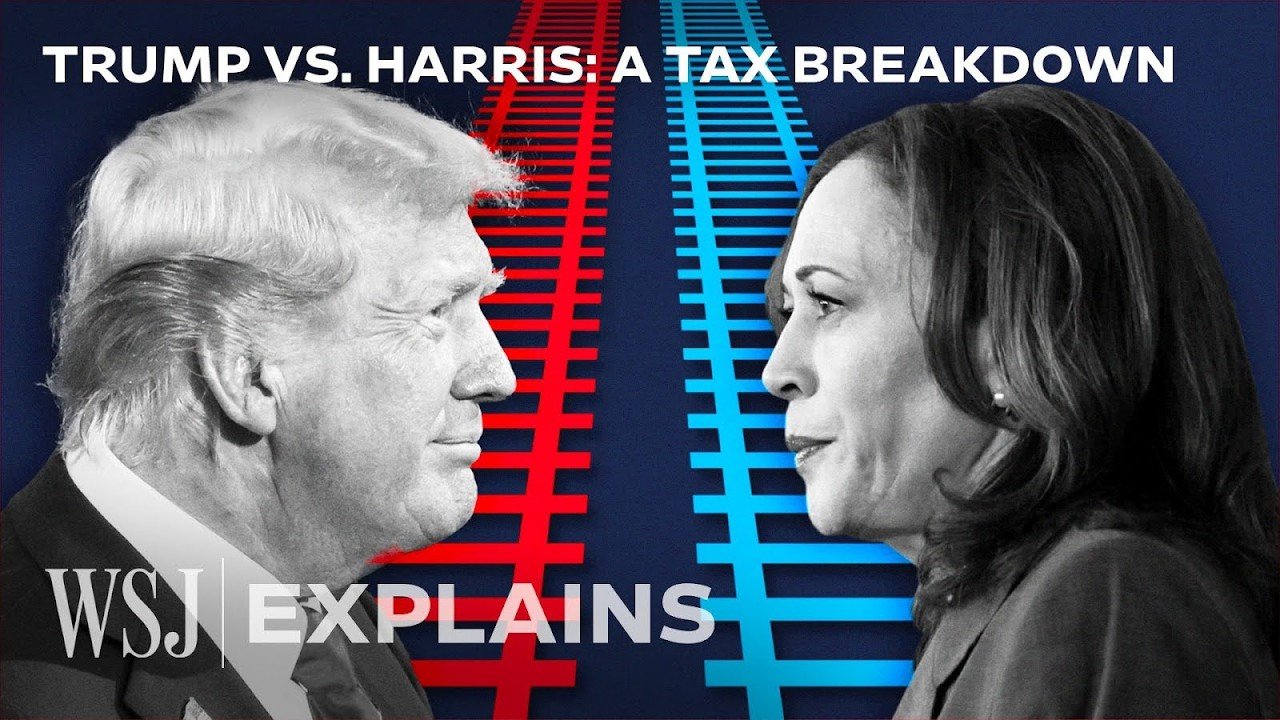The video discusses the contrasting tax plans of Donald Trump and Kamala Harris, highlighting their different approaches towards tax cuts, tariffs, and tax increases. Trump proposes extensive tax cuts and tariffs, particularly on imported goods, aiming to extend his previous tax policies, which could significantly impact federal revenue. Harris focuses on tax cuts for households earning under $400,000 while planning to increase taxes on corporations and the wealthy, aligning with Biden’s fiscal strategies. Both plans indicate a reshaping of tax responsibilities in America, with a $2.3 trillion gap in their proposals, reflecting divergent visions for the country’s economic future.
- Donald Trump’s tax plan includes roughly $2 trillion more in tax cuts than Kamala Harris’s plan, with significant tariffs on imported goods to offset some costs.
- Trump aims to extend the tax cuts he signed into law in 2017, which are set to expire at the end of 2025, with his new proposals potentially costing over $6.5 trillion over 10 years.
- He proposes reducing the corporate tax rate to 15% for companies manufacturing in the U.S., which could decrease federal revenue by $200 billion over a decade.
- Trump suggests eliminating income tax on Social Security benefits, which could lead to a $1.8 trillion loss in federal revenue over 10 years.
- Kamala Harris plans to cut taxes for households making under $400,000 and raise taxes on corporations and the wealthy, with her proposals costing about $4 trillion over 10 years.
- Harris proposes expanding the Child Tax Credit, offering more significant relief for families with young children, which would cost $1.2 trillion over the next decade.
- She also announces a first-time home buyer tax credit of $25,000 to address housing affordability, a plan estimated to cost around $100 billion.
- Trump’s revenue plan relies on imposing tariffs, especially on Chinese goods, which could raise costs for the typical household by $1,700 annually.
- Harris’s tax strategy avoids tariffs and focuses on raising taxes on the top 3% of American households, aiming to generate nearly $5 trillion in revenue.
- The successful implementation of either tax plan would likely require the respective party to control both the White House and Congress.
- A divided government could derail either tax plan, with potential significant tax increases for most households if current policies expire at the end of 2025 without a new deal.
The Wall Street Journal is an American business and economic-focused international daily newspaper based in New York City. The Journal is published six days a week by Dow Jones & Company, a division of News Corp.
AllSides Media Bias Rating: Center
https://www.allsides.com/news-source/wall-street-journal-media-bias
Official website: https://www.wsj.com
Original video here.
This summary has been generated by AI.

Leave a Reply